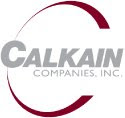By Patrick Nutt, Senior Associate
I have a confession to make: I am a commercial real estate broker. Just one part of being a broker is the constant networking and socializing, staying on top of the latest trends and rumors throughout the industry. Nowadays, attending industry functions similar to last week’s ICSC event feels more like going to a support group than a high energy networking event. An introduction to someone outside of the real estate world generally proves to be even worse, with a typical conversation generally going something like this:
Party A: “So, what do you do for a living?”
Me: “I’m in commercial real estate.”
Party A: “Oh, sorry to hear that, how are you doing these days?”
(As a point of reference for some people that may not know, “commercial real estate” is actually my field of occupation, not a rare, incurable disease.)
Sure, the commercial real estate sector has seen better days, everyone knows that, but what most aren’t aware of is the relative stability in the net lease sector. Consider that, according to a recent CoStar report, retail sales volume as a whole was down 43% for 2008 vs. 2007, however during that same span, shopping center transactions alone are down 90%. In addition, when you talk about the re-pricing of assets and adjusting cap rates, Shopping center caps are rising (prices falling) at twice the rate of single tenant sites, rising 145 basis points over the past 12 months.
I suppose I could provide some lengthy, in-depth, study and analysis of what has caused this, but I prefer to take a more “common sense” approach these days. Plain and simple, net leased assets are more often occupied by national tenants, where shopping centers may feature a national anchor, their rent rolls and CAM fees rely heavily on the local tenants, precisely those that may lack the necessary operating capital to sustain the current recession. The passive, long term leases and strong national tenants which generated the popularity of single tenant net leased sites over the past 5-7 years are precisely what have afforded this stability.
Shopping centers, office buildings, and other commercial properties are most often occupied by multiple tenants, signed to shorter term leases of 3-5 years. As these leases prepare to expire, tenants are using this opportunity to request rent reductions, lower CAM contributions, and even shorten primary lease terms. While those landlords deal with shrinking rent rolls, tenant turnover, and rising operating costs due to higher vacancy, finding a buyer to jump into this situation could prove difficult. Add in the fact that financially sensible debt is tough to find, the only deals trading these days seem to be the smaller, lower leveraged purchases under $7M occupied by strong tenants. These criteria sound an awful lot like a typical McDonald’s, Burger King, Pep Boys, Advance Auto Parts, CVS, or Walgreen’s transaction, don’t they???
Like I said, commercial real estate may have seen better days, but if I had to pick a niche to work in during this down-cycle, the net lease nation sure seems to be a pretty good place to be.
Patrick Nutt, Senior Associate
Friday, February 13, 2009
I Have A Confession!!!
Subscribe to:
Post Comments (Atom)





No comments:
Post a Comment